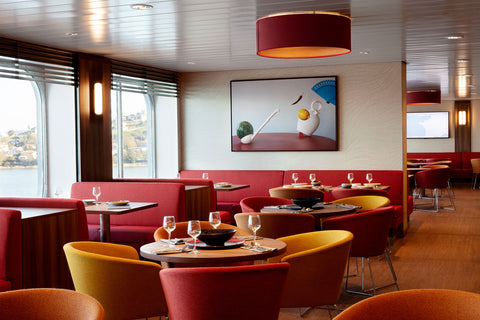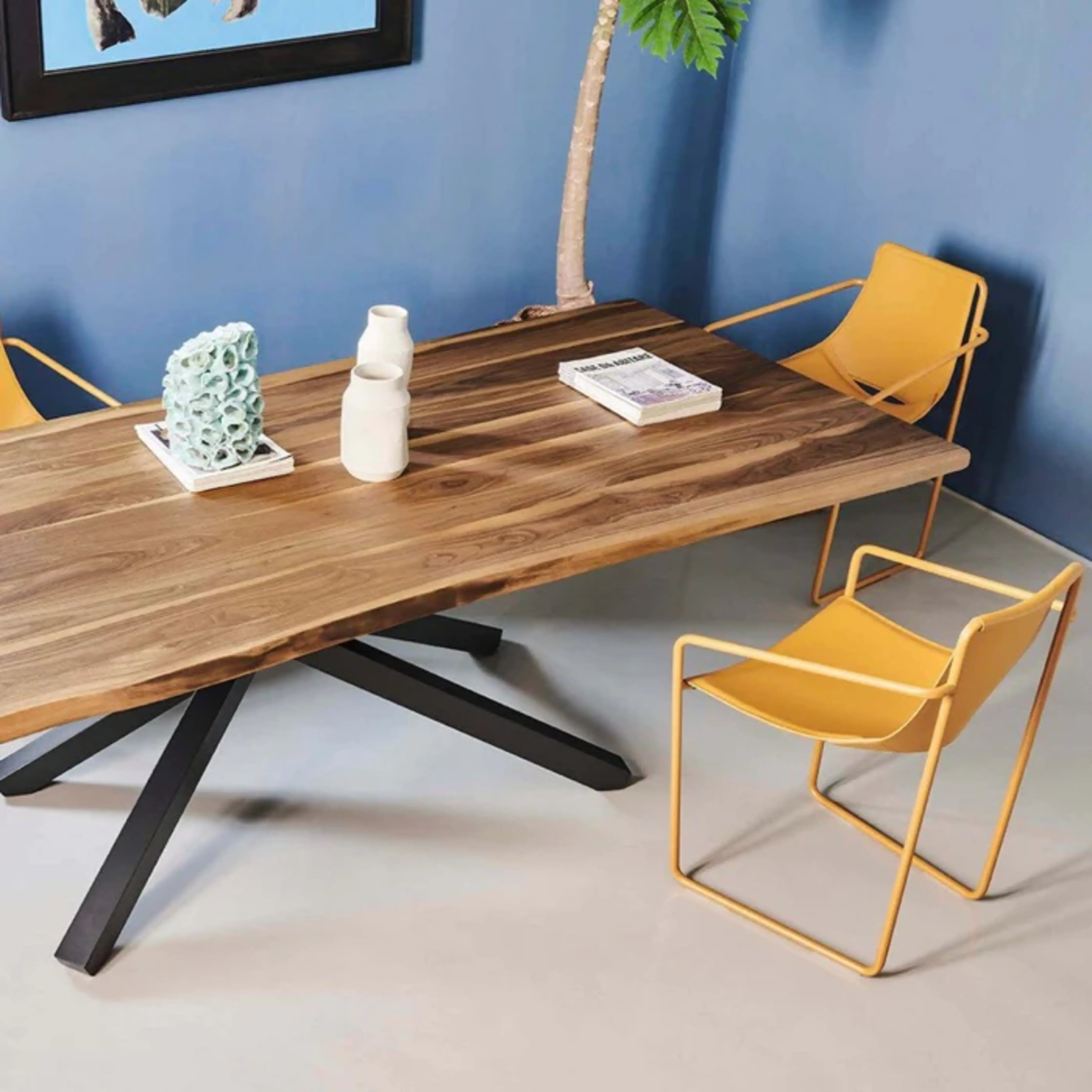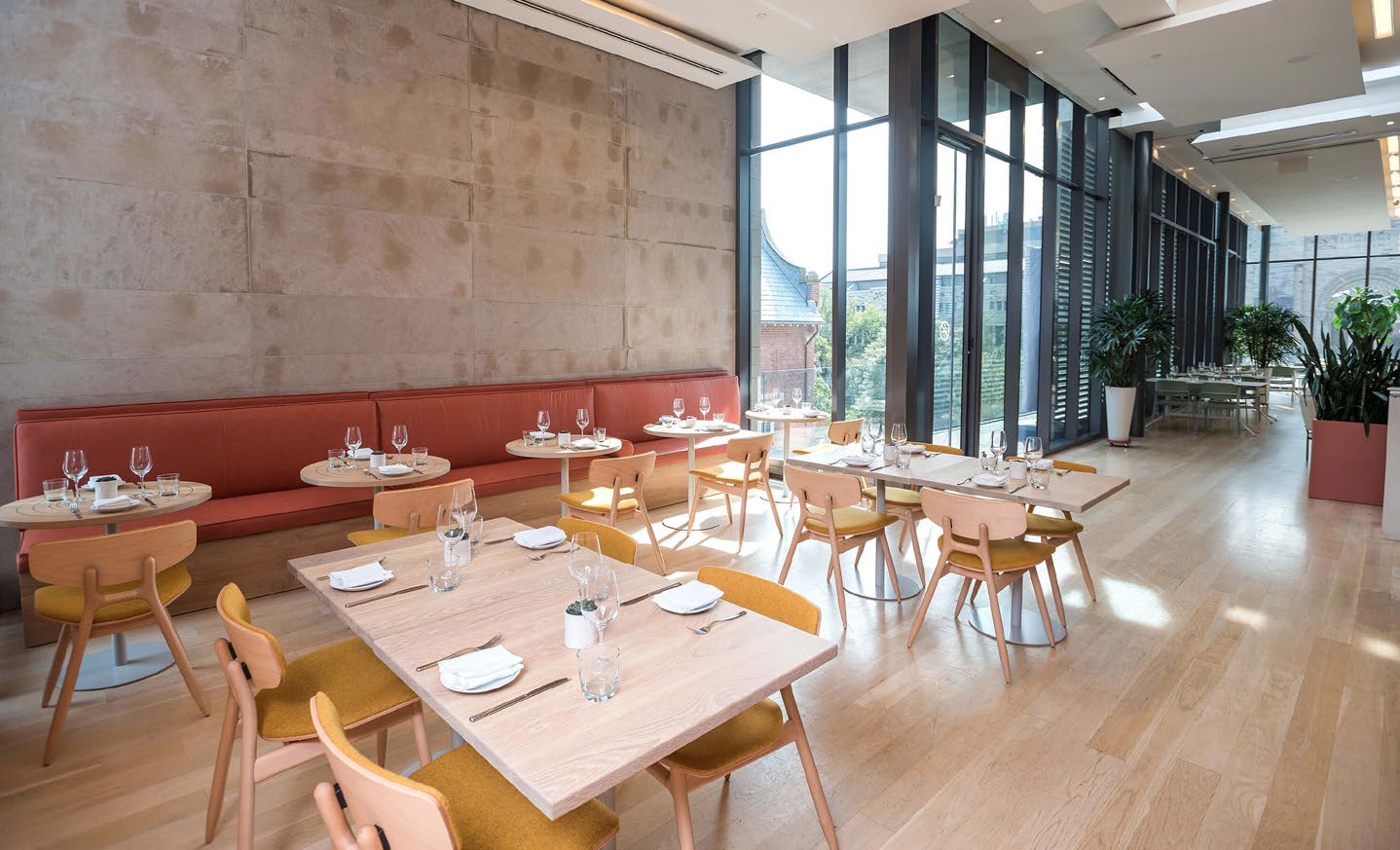
How to Set a Dinner Table Properly: Pro Tips for Any Occasion
Dining Table Dynamics: How Aesthetic Settings Influence Taste and Experience
The Elegance of Entertaining: Mastering the Art of the Dining Table
We often hear that humans are visual creatures, and few statements rival that on the truth meter. We first appreciate something by how it looks before we experience it. This statement applies to the dinner setting as well.
Look at top-notch restaurants. Think about how much time they dedicate to setting their tables so well. Even if you haven't had the pleasure of eating in one, you've perhaps at least seen it in movies. There's something so appealing about the proper placement of cutlery, flowers, and folded towels. Indeed, dinner setting is a form of art; one that determines the tone of a meal and the ultimate dining experience.
The Psychology Behind Table Setting

Research published in ScienceDirect revealed how impactful table setting and eating location are to food intake and acceptance. The methodology of the said research was magnificent in its simplicity. The researchers served the study participants roast chicken in three table settings. This was within real contexts and through the use of sensory booths comprising:
- A plastic tray in a classroom setting.
- A home-style table in a dining room setting.
- A gourmet table in a restaurant setting.
The study’s participants gravitated toward the gourmet-style setting. Not only that, but they also ended-up consuming more food. They also ate slower due to the perception that they were less hungry. Yet, that was not the case when they were in the sensory booths.
The research confirmed what it set out to do—To show that food intake and acceptance will vary depending on the table setting and eating location.
Let's cut through the science and simplify the findings. We can summarize the psychology behind table settings as follows:
- Aesthetic appeal is a natural allure.
- Order and organization have a calming effect on people. Setting a table provides structure and predictability to the whole dining experience.
- Attention and mindfulness to detail make people more present at the moment. That will lead to more enjoyment and meaningful dining experiences.
- Hospitality and social connection are a reflection of the act of setting the table. They communicate one's desire to make guests feel welcome. After all, who would take all that time if they didn't want guests to enjoy the dining experience?
- Perception of enhanced flavor is connected to attractive presentation. In fact, there's a name for it: the plating effect. There's a strong link between the perception of flavor and visual cues. It can even determine how diners perceive the ethnicity of food flavors.
So much to think about as you set your table the next time, right? Please read on; we will share some fantastic tips.
The Art of Tablescaping: Beyond Just Setting the Table
Imagine for a minute how much thought, planning, and attention goes into landscaping. Well, it isn't very different from what you need to do when setting the perfect table or tablescaping.
The History of Tablescaping
Tablescaping became quite popular during the COVID-19 pandemic. Quarantines and lockdowns forced people to stay indoors. So, some took time to pay more attention to dinner settings as a creative outlet. The sense of control of a perfectly set table also had a calming effect. With so much COVID-19 anxiety all over, eating at a set table had some mental benefits.
But tablescaping is by no means a new trend. From as far back as the 1700s, aristocrats would dress their tables with ornaments. At first, people would eat buffet style. So, their table would get full of empty bowls. That didn't leave much space for anything else.
But in the last part of the century, served meals became the norm. With someone taking away the empty plates, there was a lot of space on the tables. Thus, the addition of ornaments that signified one's social status started. Themed tablescapes brought in a sense of fantasy. Also, it was a way to escape the drudgeries that come from privileged lives.
The Industrial Revolution brought in glassware, which made tablescaping a trend. By the mid-1800s, even the common people or middle class had hopped onto the tablescaping train. By the 1930s, tablescaping had become a social event. Ladies would display some amazing themes at events, gardening clubs, and more.
Nowadays, thanks to social media, tablescaping has become even more popular. Indeed, it has become a fantastic way to pass one’s time and enjoy beauty and creativity. Certainly, there is no shortage of trends to bring life to your table. These include Tropical Paradise, Coastal Chic, Bohemian Bliss, Garden Party Elegance, and more.
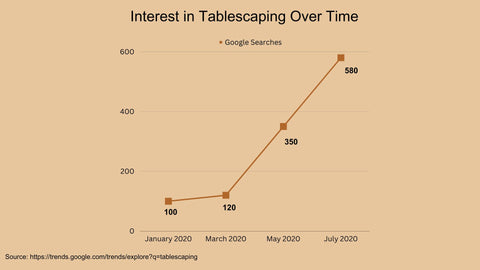
Understanding the Nuances of Tablescaping
Tablescaping is not about merely placing utensils and dishes on the table. No, it's about bringing your creativity to the forefront. Like a good painting, you want to create a visual feast—A feast that blends the setting with the actual meal. There are actual mental health benefits to tablescaping. The ritual behind focusing on the task is an excellent moment for reflection. The simple act brings a level of stability that can relieve anxiety.Tablescaping provides a creative outlet and a sense of control when life feels chaotic. Taking the time to artfully design a table setting helps people slow down and find joy in the little things.
The Importance of Color Coordination
Color coordination is the brush stroke that expresses the true art of tablescaping. This may come as a surprise. Tableware color has a huge impact on taste perception. Of course, we have to back that up with some research findings. The same report we earlier shared revealed that study participants enjoyed strawberry mousse more when served on a white plate. This was in stark contrast to when they ate it off a black plate.
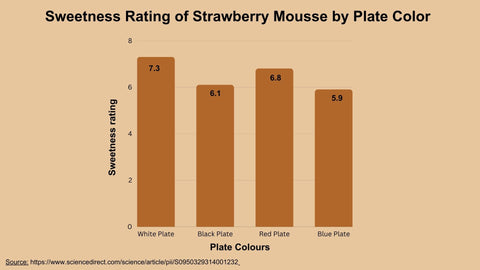
Color has a subtle yet powerful impact on our dining experience in the following ways:
- Bold pops of color add vitality.
- Soft, muted palettes create an elegant ambiance.
- Matching the color palette to the meal helps enhance the flavors. For instance, earthy tones are great for rustic dishes, while cool hues are ideal for seafood.
- Coordinating table linens, napkins, serveware, and decorations creates a cohesive theme.
A mishmash of colors that seem carelessly put together can be off-putting. It also shows that whoever did the set-up did not put much thought into it.
The Subliminal Upsell: How Table Settings Influence Ordering
Do you know why restaurants take time to properly set their tables? Well, it's a very powerful marketing tool for them. A fully set table encourages guests to order at least two courses. Marketers refer to this as a "subliminal upsell”. It all comes down to the dining experience.
An empty table communicates that you'll be serving yourself. A fully set table, on the other hand, promises a more upscale dining experience. Diners will expect a multi-course dining experience at such a table. The simple sophistication of the setting will make the diners order more food.
Think about it: a cozy, tasteful ambiance is warm and welcoming. Oftentimes, you want to stay as long as you possibly can in such a setting. But you can't stay if there's no food on your plate or drink in your glass, right? So, to stretch the experience longer, you keep ordering.
The Role of Table Setting in Customer Reviews
If you own a restaurant or eatery, you know the importance of good reviews. Customer reviews can make or break a restaurant, so much so that restaurant owners fear food critics. Jay Rayner, a journalist for the Guardian who writes restaurant reviews, wrote a blistering review of Le Cinq. Ironically, it was one of the best restaurants in Paris and the world. It is a Michelin three-star restaurant in the world's top 100 best restaurants.
As you can imagine, the French were upset that Jay had the audacity to tear down their restaurant. But the world was eager to read the review. When the review went viral, Jay's website crashed due to the traffic. That brings us to the problem of modern society—Internet reviews can kill a business.
About 60% of potential diners will read a restaurant’s customer reviews before choosing to patronize it. A simple step like setting the perfect table can generate positive reviews. Thus, consider small details like how you fold napkins. That creates the perception that the same care and attention goes into how you prepare the meals.
With these Instagram-ready days, there's a lot to gain. A happy diner taking pictures of the food and table setting and posting them on their social media platforms is a major seling point. What you get is free marketing that comes from the positive reviews.
The Hygiene Factor: Table Settings in the Post-Pandemic World
The COVID-19 pandemic made people more conscious of good hygiene. There has been an increase in the behavior and frequency of hygiene practices. Remember how handwashing and sanitization became the running theme and message? After a short while, it became a normal routine. The hygiene practices cut across all age groups and genders. Well, hygiene practices relating to food safety also gained focus.
Outside of the home, there's an assurance of safety by walking into a clean eating establishment. A UK survey revealed that three quatrers of respondents prioritize good hygeine when choosing a restaurant. This is more significant now than it was before the pandemic. The survey showed that 6 out of 10 respondents highlighted bars and restaurants as some of the most risky places to get a COVID-19 infection. Thus, they will only patronize those they trust.
- Spotless tableware, polished glassware, and neatly folded, unused napkins indicate that cleanliness is a priority.
- Disposable or frequent table changes assure diners that sanitization is ongoing.
- Menu sanitation and clean restrooms complement meticulous table presentations.
- Overt expression of hygiene protocols through table settings will boost guest confidence in these post-pandemic times.
Frequently Asked Questions (FAQs)
Let's address some of the most frequently asked questions about table setting.
How Does Table Setting Affect the Psychology of Eating?
There is a direct correlation between table setting and food uptake. It shows attention to detail, order, and hospitality. Also, diners' perception of food flavor increases depending on the table setting. They are likely to order more food and eat slower in an attractive table setting. This is due to the simple fact that they are enjoying the sophistication of the setting.
What Are the Latest Trends in Tablescaping?
Tablescaping became more popular during the COVID-19 pandemic. Due to lockdowns and quarantines, people needed to find creative outlets. Tablescaping provided this as well as a way to practice mindfulness.
The latest tablescaping trends include foraged elements, botanical prints, geometric patterns, and mashups mixing elegant and rustic styles.
How Can Restaurants Leverage Table Settings for a Better Customer Experience?
A good table setting is a powerful communicator. It shows attention to detail, hygiene, cleanliness, and more. Customers naturally gravitate to aesthetically pleasing environments. Furthermore, personalizing dining experiences shows care for patrons. The psychology behind table settings provides an opportunity for subliminal upselling. Also, it can earn a restaurant positive customer reviews, which will bring it more patrons.
The Takeaway
Table setting has a huge role in the dining experience. It affects how patrons experience the food, ambiance, and the perception of care. A simple meal can turn into a wonderful, memory-forming experience. Focus on factors like color and hygiene to elevate the dining experience.

